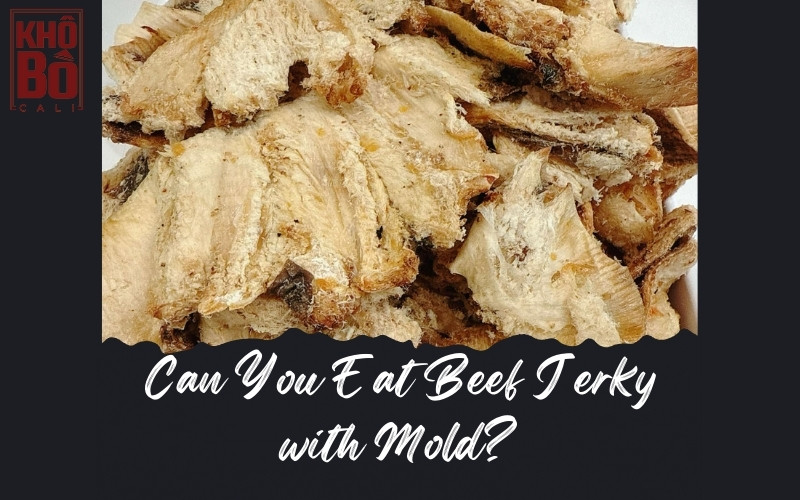Beef jerky is a favorite snack for many thanks to its rich flavor and convenience. However, it’s not uncommon to find mold on beef jerky after storing it for some time, leaving you wondering whether it’s still safe to eat and how to prevent it from happening again. In this article, we’ll uncover the answers and share the best ways to store beef jerky properly
What is Beef Jerky?
Beef jerky is a popular snack made from fresh beef that goes through a process of preparation, seasoning, and drying under strict food safety standards. The cut most commonly used is the hind leg, as this part has a perfect balance of tenderness and firmness, with dense fibers and high nutritional value. Thanks to these qualities, beef jerky is not only flavorful but also packed with nutrients.
To achieve its distinctive taste, beef jerky is often marinated with a variety of traditional spices such as licorice, cinnamon, cloves, cardamom, black pepper, ginger, chili, and onions. Depending on regional traditions and family recipes, the seasoning mix may vary slightly, but the goal is always to create a harmonious blend of spicy, sweet, salty, and aromatic flavors that leave a lasting impression.
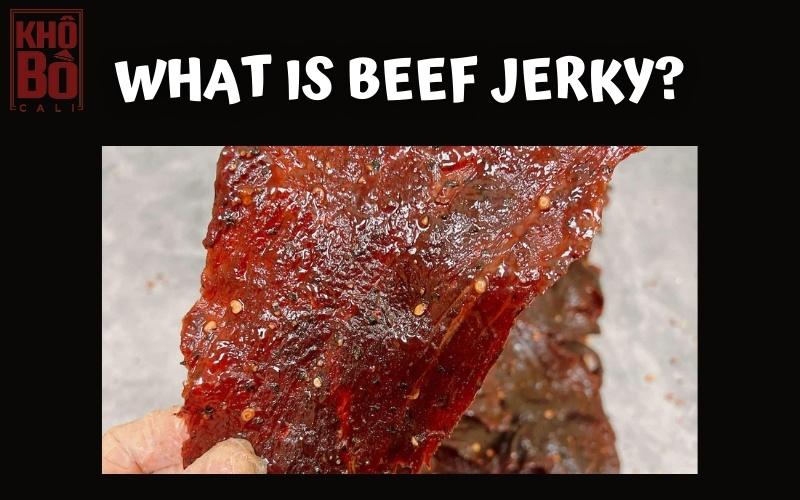
The drying process for beef jerky can be carried out in different ways. In rural areas, people often sun-dry the meat or hang it above the kitchen fire, where smoke and heat naturally dehydrate the slices. In modern production, ovens or dehydrators are used to better control temperature and ensure even drying. Regardless of the method, the key principle remains the same: remove moisture from the meat to prevent bacterial growth while retaining its natural flavor.
An important step in making beef jerky is the complete removal of fat, as fat causes the meat to spoil quickly. By trimming away the fat, the jerky stays fresh longer and maintains its appealing taste.
Beyond beef jerky, similar methods are used to create other dried meats such as buffalo jerky, venison jerky, or even pork jerky. Each type carries its own unique flavor, enriching culinary traditions and offering food lovers more diverse choices.
How to Identify Mold on Beef Jerky
Recognizing mold on beef jerky is usually quite simple if you know what to look for. When beef jerky becomes moldy, you will notice unusual spots and textures on its surface. Common signs include light green patches, grayish speckles, or a thin fuzzy layer that looks like tiny hair growing on the meat. These visual changes are the clearest indicators that the jerky has been contaminated by mold.
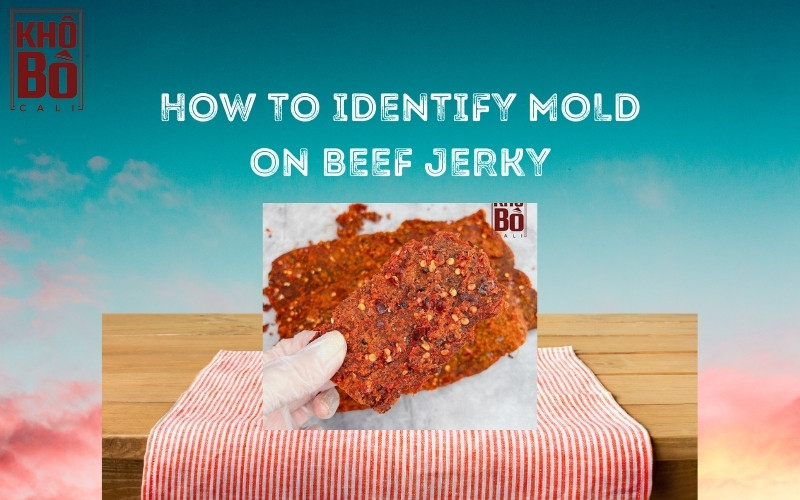
In addition to its appearance, the smell of the jerky is another important clue. Fresh, safe beef jerky usually has a smoky, savory aroma, but moldy jerky gives off an unpleasant, sour, or musty odor. In some cases, even holding it close to your nose may cause slight irritation or an itchy sensation, which is a warning sign that the product is no longer safe to consume.
If you encounter mold on beef jerky, the safest option is to discard the affected portions. Some people may attempt to salvage the edible parts by cutting away the visibly moldy sections and keeping only the unaffected pieces. However, it’s important to note that mold spores can spread beyond what is visible to the eye, so eating even the seemingly “good” part still carries a risk. For your health and safety, it’s always better to be cautious and avoid consuming jerky once any mold is detected.
Can You Eat Beef Jerky with Mold?
A common question many people have is whether it is safe to eat beef jerky once mold appears. In reality, mold on beef jerky may not cause immediate illness at the exact moment you consume it, since mold itself does not continue to grow inside the human body. However, the real danger lies in the toxins that mold produces. These toxins, known as mycotoxins, can have serious long-term effects on your health.
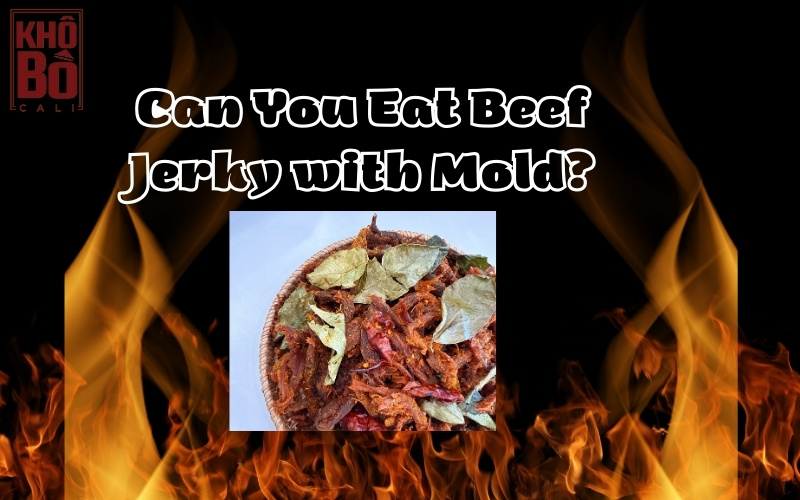
Some people think it’s fine to simply scrape off the mold and continue eating the jerky, but this is a risky habit. Once mold on beef jerky is visible, there is a high chance that mold spores have already penetrated deep into the meat far beyond what the naked eye can detect. Even if you wash the meat, sun-dry it, or reheat it at high temperatures, you cannot completely remove these toxins.
The consequences of consuming contaminated jerky can be severe. Prolonged exposure to mold toxins may damage the liver and, in serious cases, increase the risk of liver cancer. For this reason, food safety experts strongly recommend discarding any jerky that shows signs of mold instead of trying to salvage it. Your health should always take priority over attempting to save a small amount of food.
How Long Does Beef Jerky Last?
As mentioned earlier, beef jerky is made from fresh beef that has been marinated with spices and then dried, either by sun-drying or using a dehydrator. The drying process gives the meat a firm texture, a smoky aroma, and a rich, savory flavor that can be enjoyed right away. Since preparing jerky from scratch each time would be time-consuming, many people prefer to make or buy it in bulk and store it for later use.
The shelf life of beef jerky depends largely on how it is prepared and stored. Homemade jerky, when kept at normal room temperature, generally lasts about 2–3 weeks. However, if it is carefully packaged in clean, vacuum-sealed bags, it can be preserved much longer up to 4–5 months without losing too much of its flavor or texture.
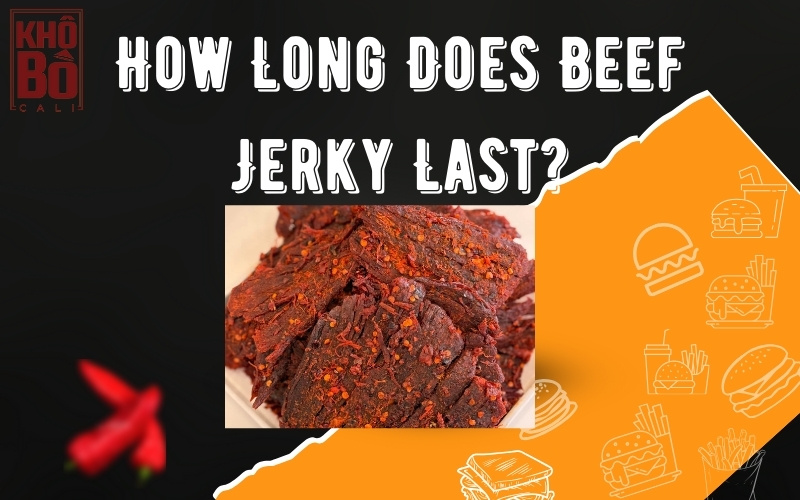
Once a package of jerky has been opened, its exposure to air and moisture significantly shortens its lifespan. For the best taste and safety, it is recommended to consume opened jerky within one month. Beyond that, the texture may dry out excessively, and the flavor may deteriorate, even if it has not spoiled completely.
In short, proper packaging and storage play a vital role in extending the freshness of beef jerky. Vacuum sealing and keeping it in a cool, dry place are the best ways to maximize its shelf life while still enjoying its signature taste.
How to Store Beef Jerky Properly
Among today’s most popular snacks, beef jerky is always a favorite thanks to its rich flavor and convenience. However, like any dried food, it needs to be stored correctly to prevent spoilage and mold. There are several effective methods you can use to keep beef jerky fresh and safe for longer periods of time:
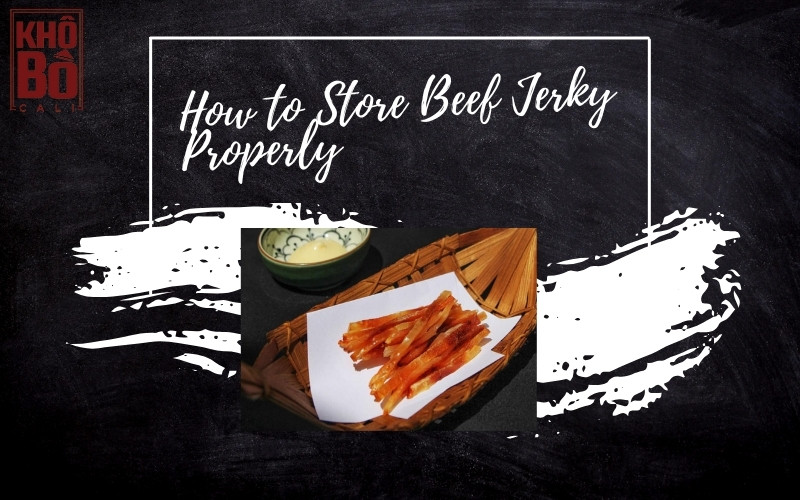
-
Keep it in a cool, dry place: Store beef jerky in an area that is well-ventilated, away from moisture, and protected from direct sunlight. Heat and humidity can quickly cause the jerky to spoil or develop mold.
-
Use airtight bags: Wrap the jerky in clean, food-safe plastic bags, squeeze out as much air as possible, and seal the bag tightly. Storing it in the refrigerator will help extend its freshness.
-
Store in sealed containers: Place jerky in a container with a tight-fitting lid and keep it in the fridge. For long-term storage, you can freeze the jerky, which helps preserve its flavor and texture for several months.
-
Divide into small portions: Separate the jerky into individual bags or containers so that each serving remains untouched until opened. This prevents frequent exposure to air and moisture, which can reduce the quality of the remaining jerky.
-
Check regularly for mold or moisture: If you notice any signs of dampness, discoloration, or mold growth, do not attempt to eat it. Discard the jerky immediately and prepare a new batch or purchase a fresh supply to avoid health risks.
By following these simple yet important storage practices, you can enjoy beef jerky at its best flavor while keeping it safe and long-lasting.
Conclusion
In summary, we’ve explored in detail whether beef jerky can still be eaten once mold appears and the best methods to preserve its freshness. While beef jerky is a delicious and convenient snack, it should always be consumed with caution. The presence of mold on beef jerky is a clear warning sign that the product is no longer safe, and no amount of cleaning, drying, or reheating can completely eliminate the risks.
By applying proper storage techniques such as vacuum sealing, refrigeration, or freezing you can extend the shelf life of beef jerky and maintain its signature flavor for longer. Remember, protecting your health is far more important than saving a piece of jerky. Always prioritize food safety, and enjoy beef jerky the way it’s meant to be: tasty, safe, and worry-free.
Readmore:
The benefits of eating beef jerky for your health
What is the best cut of meat for beef jerky
How do you store beef jerky? Here are 5 suggested ways to preserve beef jerky for longer use

